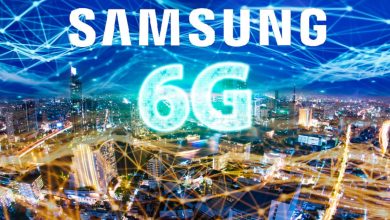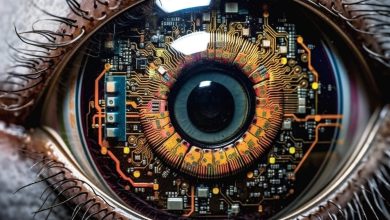Apple AI vs Nvidia AI Challenges: The Future of AI Chip Market Competition
The epic showdown: Apple AI vs Nvidia AI. Buckle up, because this one’s a wild ride! Apple’s holistic approach could redefine how we interact with technology, while Nvidia’s raw performance continues to push the boundaries of what AI can do.
Contents
Apple’s AI Approach Challenges Nvidia’s Dominance
The Future of AI Chips: The AI chip market is heating up, and it’s a good thing for us. More competition means better products and lower prices. Whether Apple becomes the next big thing in AI or if Nvidia continues its dominance, one thing is clear: the future of AI is going to be mind-blowing.
The Battle for AI Chip Supremacy Heats Up
The competition in the AI chip market is intensifying as tech giants Apple and Nvidia go head-to-head. Apple’s unique approach to artificial intelligence is posing a serious challenge to Nvidia’s long-standing dominance in this space. apple ai vs nvidia ai
Apple’s Custom Silicon Strategy
One of Apple’s key strengths lies in its custom silicon strategy. By designing its own chips in-house, like the A-series processors for iPhones and M-series for Macs, Apple can tightly integrate hardware and software for optimal performance and efficiency. This same approach is now being applied to AI.
Apple’s Neural Engine, first introduced in the A11 chip, is specifically designed to accelerate machine learning tasks. With each new generation, the Neural Engine becomes more powerful – the latest A14 boasts 16 cores and can perform 11 trillion operations per second. This custom AI silicon allows Apple to run advanced ML models on-device, providing benefits like faster processing, lower latency, and better privacy compared to cloud-based solutions.
Nvidia’s AI Dominance
Nvidia, on the other hand, has long been the go-to choice for AI computing. Its GPUs are used in everything from self-driving cars to supercomputers, prized for their ability to parallelize workloads and crunch through massive datasets. apple ai vs nvidia ai
Nvidia’s CUDA platform and cuDNN library have become standards for deep learning, with widespread support across popular frameworks like TensorFlow and PyTorch. The company also offers specialized AI chips like the Jetson series for edge computing. With an extensive ecosystem and strong mindshare among researchers and developers, Nvidia has maintained a leadership position.
Competing Visions for the Future of AI
Apple’s Edge AI Ambitions
Apple’s AI strategy revolves around doing as much processing as possible on-device – what’s known as edge AI. There are several advantages to this approach:
- Privacy: Data can be processed without sending it to the cloud
- Speed: On-device processing reduces latency by eliminating round trips to remote servers
- Reliability: Apps can still function if connectivity is lost
Apple has been steadily building up its edge AI capabilities. Recent iPhones can perform complex tasks like facial recognition, natural language processing, and augmented reality in real-time, independent of the cloud. apple ai vs nvidia ai
Nvidia’s Cloud-Centric Approach
In contrast, Nvidia’s AI efforts are more cloud-centric. The company provides the GPU horsepower behind popular cloud AI platforms from Amazon, Microsoft, and Google. Massive neural networks for applications like language models and recommendation engines are trained on banks of Nvidia GPUs.
Nvidia sees AI moving towards larger, more centralized models rather than distributed across edge devices. CEO Jensen Huang often speaks of the “infinite computing” resources available in the cloud.apple ai vs nvidia ai Nvidia’s acquisition of Mellanox, a maker of high-speed networking gear, reinforces this data center-focused vision.
Apple’s Walled Garden
Apple’s tight control over its ecosystem is both a strength and weakness when it comes to AI. On one hand, the company can optimize the entire stack, from silicon to software, in a way that’s difficult for competitors to match. Apple’s Core ML framework makes it relatively easy to integrate machine learning models into iOS and macOS apps.
However, Apple’s closed approach and focus on consumer applications means it has limited mindshare among AI researchers and enterprise developers compared to Nvidia. Much of the cutting-edge work in AI happens on Nvidia hardware using open-source software. Apple’s AI advances are often kept in-house or limited to its own platforms.
Nvidia’s Open Ecosystem
Nvidia has cultivated a large and vibrant ecosystem around its AI products. Its CUDA platform is widely used in both academia and industry, with a wealth of tools, libraries, and pre-trained models available. Nvidia’s annual GTC conference attracts tens of thousands of developers and researchers to showcase the latest advancements.
Nvidia also collaborates closely with key players in the AI space. It has deep partnerships with leading cloud providers and enterprise software vendors.
Final Thoughts Apple AI vs Nvidia AI
In the battle of Apple AI vs. Nvidia AI, it’s too early to declare a winner. Apple’s holistic approach could redefine how we interact with technology, while Nvidia’s raw performance continues to push the boundaries of what AI can do. One thing’s for sure: the future of AI chips is looking brighter – and more exciting – than ever.











